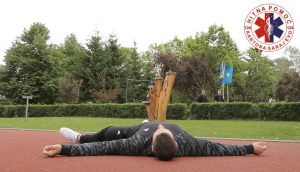SUDDEN LOSS OF CONSCIOUSNESS
SUDDEN LOSS OF CONSCIOUSNESS
Many diseases and conditions can lead to loss of consciousness, some of which are harmless (eg a transient drop in blood pressure) and some very severe (eg heart failure, head injury, increased blood loss, poisoning, heat stroke, hypothermia, drowning, electric shock). stroke, sudden illness, etc.). The depth of the unconscious state may be different and may vary in the same patient. In some situations (eg a sudden drop in blood pressure), the disturbance of consciousness may be of very short duration (so-called collapse or syncope).

Short-term loss of consciousness
One of the common reasons for calling an ambulance is sudden, short-term loss of consciousness. It most often occurs due to a sudden decrease in the supply of oxygen to the brain as a consequence of a sudden drop in blood pressure or due to a reduced level of oxygen in the space in which the person is. Namely, the person loses consciousness and collapses to the floor. In the supine position, the blood supply to the brain becomes sufficient, so the unconscious person regains consciousness in a short time.

First aid
-Safety
-Checking the state of consciousness (the victim reacts-is aware)
-If there are no injuries, raise the victim's legs so that the blood can return to the brain more easily.
-Calm down the victim, explain that you are here to help, ask how he feels, what problems he has at the moment, if he is suffering from any disease…
-Never lift the casualty abruptly, first place him in a sitting position for a few minutes, then help him to get up slowly.
-If the victim feels well, refer him to the nearest medical institution or advise him to contact his family doctor.
-If any of those present have already called an ambulance, please let us know that the casualty has left the scene of the accident so that the team can be redirected to another scene of the accident.
-If the victim does not feel well after getting up, return him to a lying position and call an ambulance
-Stay with the patient until the ambulance arrives and follow his vital signs.
-If the victim loses consciousness again, start with the Initial Approach-CABD
